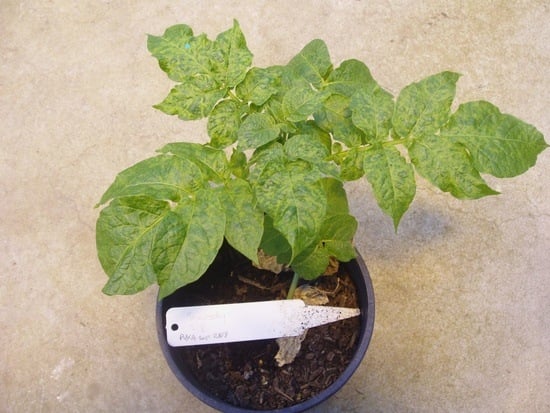The Phylogeography of Potato Virus X Shows the Fingerprints of Its Human Vector
Abstract
Share and Cite
Fuentes, S.; Gibbs, A.J.; Hajizadeh, M.; Perez, A.; Adams, I.P.; Fribourg, C.E.; Kreuze, J.; Fox, A.; Boonham, N.; Jones, R.A.C. The Phylogeography of Potato Virus X Shows the Fingerprints of Its Human Vector. Viruses 2021, 13, 644. https://doi.org/10.3390/v13040644
Fuentes S, Gibbs AJ, Hajizadeh M, Perez A, Adams IP, Fribourg CE, Kreuze J, Fox A, Boonham N, Jones RAC. The Phylogeography of Potato Virus X Shows the Fingerprints of Its Human Vector. Viruses. 2021; 13(4):644. https://doi.org/10.3390/v13040644
Chicago/Turabian StyleFuentes, Segundo, Adrian J. Gibbs, Mohammad Hajizadeh, Ana Perez, Ian P. Adams, Cesar E. Fribourg, Jan Kreuze, Adrian Fox, Neil Boonham, and Roger A. C. Jones. 2021. "The Phylogeography of Potato Virus X Shows the Fingerprints of Its Human Vector" Viruses 13, no. 4: 644. https://doi.org/10.3390/v13040644
APA StyleFuentes, S., Gibbs, A. J., Hajizadeh, M., Perez, A., Adams, I. P., Fribourg, C. E., Kreuze, J., Fox, A., Boonham, N., & Jones, R. A. C. (2021). The Phylogeography of Potato Virus X Shows the Fingerprints of Its Human Vector. Viruses, 13(4), 644. https://doi.org/10.3390/v13040644








